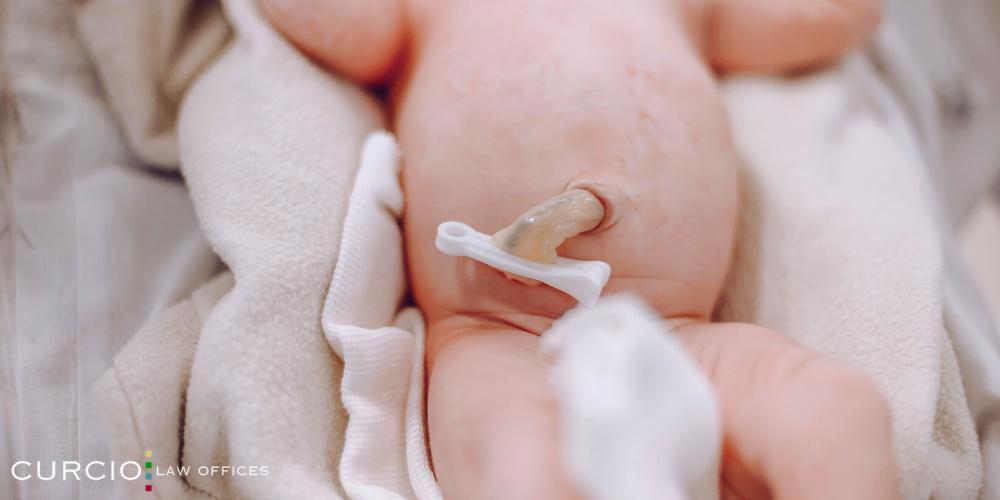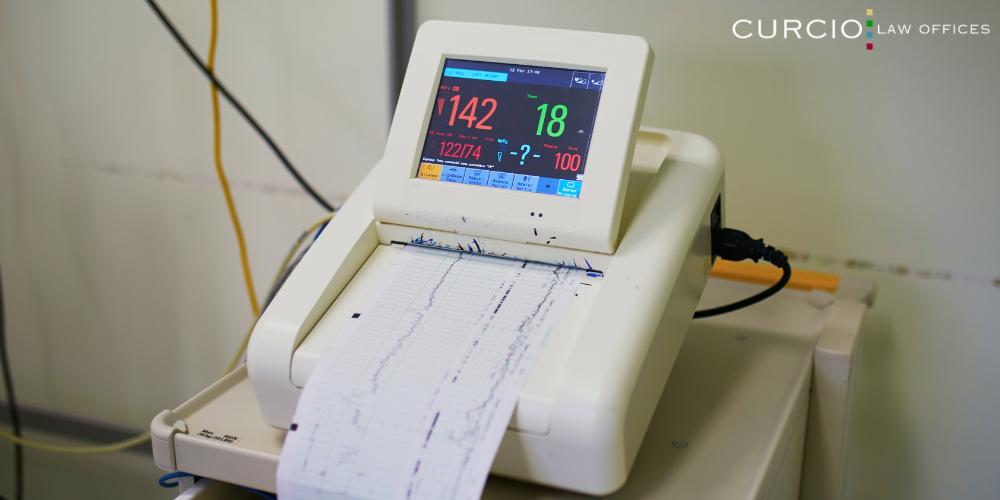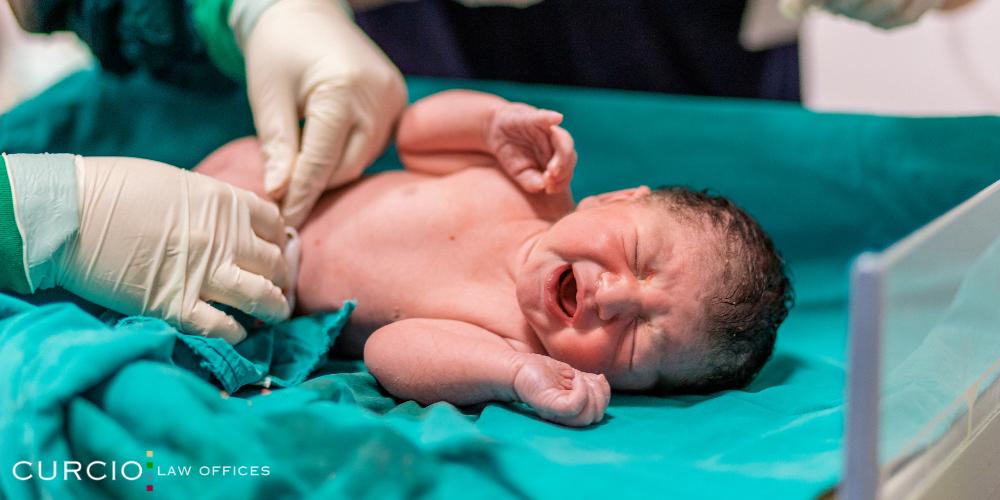Umbilical Cord Prolapse Birth Injury Claims Chicago
PRACTICE AREAS
Chicago Umbilical Cord Prolapse Lawyer
The umbilical cord literally keeps an unborn baby alive throughout pregnancy, labor, and delivery. It’s made up of only three blood vessels: one vein and two arteries. The cord allows the baby to receive adequate blood flow, oxygen, and nutrients. Occasionally, umbilical cord prolapse – or the compression of the cord – can occur during labor and delivery. Without constant fetal monitoring and immediate medical intervention, unborn babies can suffer from birth asphyxia and even death due to umbilical cord prolapses.
If your baby has suffered brain damage and/or death due to umbilical cord prolapse, you may have grounds to file a birth injury lawsuit, especially if medical negligence played a major role. An experienced Chicago birth injury lawyer at Curcio & Casciato can help you determine if you have a strong case. We can also help you recover fair compensation from negligent doctors. Call 312-321-1111 to schedule a free consultation with our legal team today.

What is an Umbilical Cord?
The umbilical cord is basically the fetus’s lifeline throughout the entire duration of a pregnancy. It connects the baby to the mother’s placenta and delivers nutrients while also exporting waste.
Once the baby is born via vaginal delivery or c-section, doctors clamp and cut the cord. Over the course of the baby’s first few weeks of life, what’s left of the umbilical cord will dry, turn black, and fall off.
What is Umbilical Cord Prolapse?
All throughout pregnancy and birth, the umbilical cord will carry blood, nutrients, and oxygen to the baby. All of this is crucial for a baby’s survival. If something were to happen to the umbilical cord, we can only assume that the baby’s life would be in grave danger.
A prolapsed umbilical cord occurs when the umbilical cord drops between the fetal presenting part in the birth canal (usually the baby’s head) and the open cervix.
Umbilical cord compression during labor and delivery is a medical emergency that can result in major birth injuries or death to the unborn baby. That’s because umbilical cord prolapses restrict blood flow, oxygen, and nutrients. Doctors must work quickly to relieve pressure on the cord and deliver the baby safely.
Types of Umbilical Cord Prolapse
There are two main types of umbilical cord prolapse.
- Overt Cord Prolapse occurs when the umbilical cord slips down between the fetal head and the cervix and then into the birth canal. This means that many doctors can feel the prolapsed cord during a vaginal examination. Overt prolapse generally occurs after membrane rupture.
- Occult Cord Prolapse occurs when the umbilical cord moves down alongside the fetal presenting part and doesn’t fall out into the vagina. An occult prolapse generally can’t be detected through a vaginal examination alone. Lastly, an occult cord prolapse can occur with either intact or ruptured membranes.
- Funic Presentation occurs when part of the umbilical cord gets compressed between the fetal presenting part and the opening of the cervix (cervical os). The membranes are still intact during this type of cord compression.
How Common is Umbilical Cord Prolapse?
According to the Cleveland Clinic, incidences of umbilical cord prolapse range between 0.16% to 0.18% of births. In other words, umbilical cord prolapse cases happen in approximately 1 in every 300 births.
What Causes Umbilical Cord Prolapse?
Umbilical cord prolapse occurs due to the following reasons:
- Preterm delivery (the baby is born before 37 weeks)
- Labor and delivery of more than one baby
- Too much amniotic fluid (polyhydramnios)
- Fetal malpresentation (the baby is in the wrong position during birth, such as the breech presentation)
- Premature rupture of membranes
- Low birth weight
A 2018 study states that one of the biggest risk factors for a prolapsed cord are procedures that are meant to induce labor, such as the insertion of a cervical ripening balloon or an amniotomy. An amniotomy is when a doctor intentionally ruptures the amniotic sac in order to induce labor. In fact, almost 50% of cases of a prolapsed umbilical cord occur when a doctor performs an amniotomy and/or inserts a cervical ripening balloon.

How a Compressed Umbilical Cord is Diagnosed
There are two main ways to diagnose umbilical cord prolapse: through a vaginal exam or by watching the baby’s heart rate.
As previously stated, you can only feel an overt prolapsed cord through an examination. Occult cord prolapse often can’t be diagnosed through an examination alone. That’s why monitoring fetal heart rate during labor and delivery is so important. If there is pressure on the cord, oxygen and blood flow will be restricted. This will result in fetal bradycardia, which is a fetal heart rate of less than 120 beats per minute (BPM).
Can an Ultrasound Predict Cord Prolapse?
No, an ultrasound scan (nor any other medical test or procedure) can’t predict umbilical cord prolapse. Prolapses occur if membranes rupture prematurely or if any of the other risk factors (mentioned previously) are present.
Umbilical Cord Prolapse Treatment
Fetal bradycardia is one of the few reasons for an emergency C-section. So, an unborn baby with fetal bradycardia is usually delivered immediately through an emergency cesarean section.
While the mother is being prepped for a cesarean section, a doctor may try to relieve pressure from a prolapsed cord by inserting their fingers into the birth canal and physically lifting the baby’s body off the cord. If the doctor genuinely believes a vaginal delivery will be faster than a c-section, then they will attempt to physically move the baby off the cord and expedite the delivery in any way they see fit.
Optimal management of umbilical cord prolapse prevents perinatal death in most cases. In fact, the fetal mortality rate is only 3% if it occurs inside a hospital setting. If an umbilical cord prolapse occurs outside of a hospital setting, the fetal mortality rate jumps up to approximately 44%.
Umbilical Cord Prolapse Complications
A compressed umbilical cord carries an increased risk of several birth injuries, including:
- Fetal Hypoxia and Brain Damage: If the baby’s oxygen supply is cut off for too long, they may suffer significant brain damage. Cerebral palsy is a common result of brain damage during labor and delivery. This condition causes lifelong motor disability.
- Fetal Death: Poor management of umbilical cord prolapse during labor and delivery can result in a stillbirth.
If your newborn died due to medical negligence, while we can’t bring him or her back, we can pursue damages on your behalf. Contact a Chicago wrongful death attorney for more information.
Can You Sue for Umbilical Cord Prolapse?
If your baby’s case of umbilical cord compression occurred due to your doctor’s negligence, and your baby suffered brain damage (such as cerebral palsy) and/or death, then you can definitely sue. Or if your baby suffered major complications/death due to a doctor’s mismanagement of umbilical cord prolapse, you could sue for that too.
If your child was born with CP caused by cord prolapse, a seasoned Chicago cerebral palsy attorney can help guide you through this process.
Birth injury lawsuits are reserved for parents of babies who survived labor and delivery, but who still suffered significant injuries and disabilities. Meanwhile, wrongful death lawsuits are reserved for parents of babies who suffered a stillbirth. The experienced legal team at Curcio & Casciato can successfully handle both birth injury lawsuits and wrongful death lawsuits. Our Chicago medical malpractice attorney can analyze the details of your case and help you determine whether or not medical malpractice contributed to your baby’s birth injury or death.
Birth Injury Damages
Chicago birth injury lawyers at Curcio & Casciato can help you recover financial compensation for the following types of damages:
- Past and future medical expenses
- Physical therapy expenses for the child if they suffer a severe brain injury
- Physical pain and suffering
- Emotional distress
- Lost wages (for the parents of the injured baby)
- Caregiving expenses if the umbilical cord prolapse results in a permanent disability
- Expenses for necessary medical equipment (if the child has a permanent disability) such as wheelchairs, leg braces, etc.
- Average cost of funeral and burial expenses if the prolapsed umbilical cord results in wrongful death
A dedicated Chicago mental distress attorney can show you how to compute pain and suffering and help you calculate lost wages or income.
The amount of financial compensation you receive directly depends on how many of the aforementioned damages you and your baby have suffered as a result of a prolapsed umbilical cord. Our Chicago birth injury lawyers can help you calculate an approximate settlement amount through medical records, medical billing statements, lost income statements, and more.

Call a Chicago Birth Injury Lawyer at Curcio & Casciato Today
Healing from a traumatic birth is hard enough. The last thing you need to do is stress about a birth injury lawsuit while you’re healing from such a devastating life event. The birth injury attorneys at Curcio & Casciato want to take on all the stress of a birth injury lawsuit for you, so all you have to do is focus on healing. Our Chicago personal injury attorneys will help you determine if you have a strong case, defend your legal rights, and fight for you (and your baby’s) justice. The best part is that we work on a contingency fee basis, which means that we don’t get paid unless you get paid. Call 312-321-1111 to schedule a free consultation with our legal team today.


